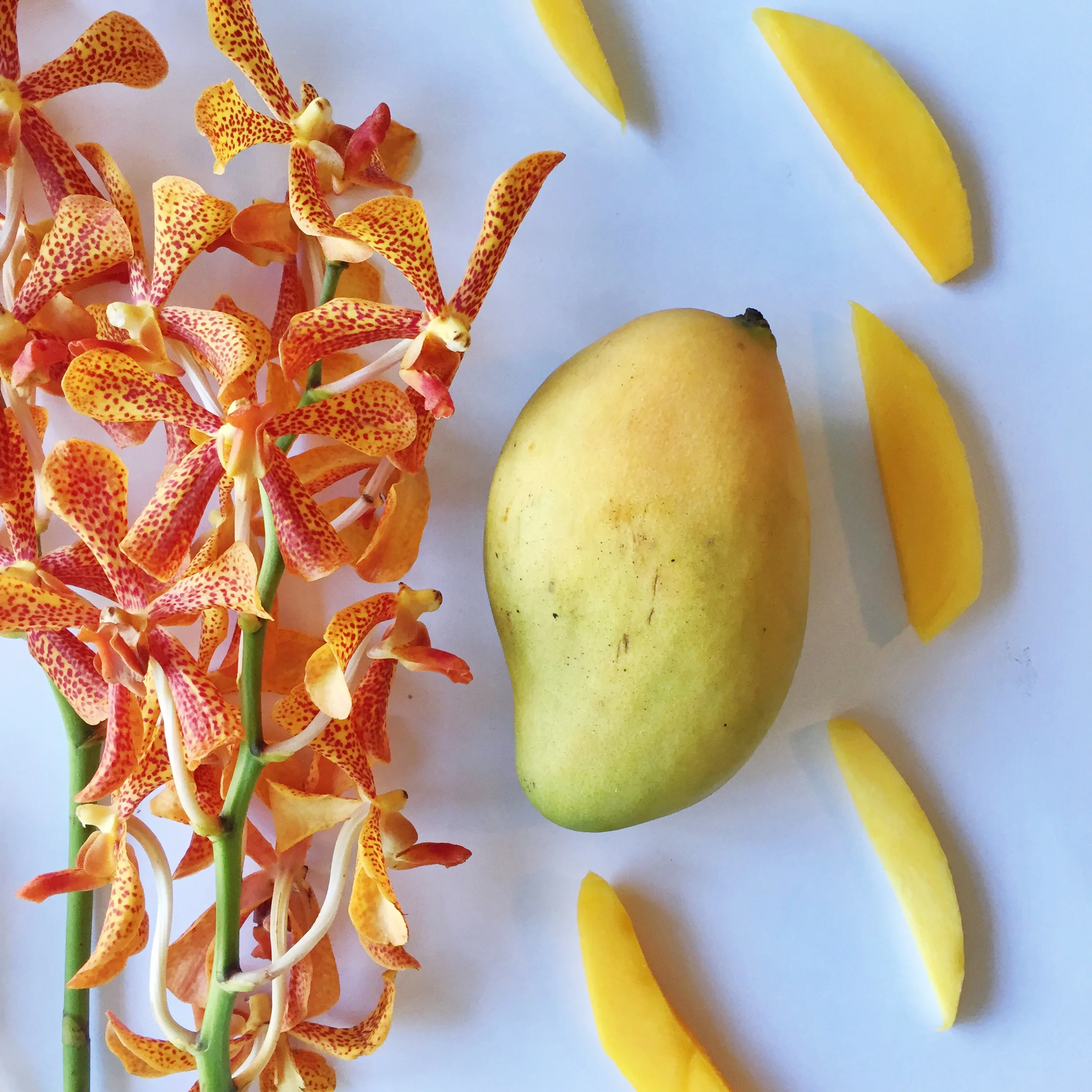This week we’re all about Haitian mangoes, (also known as Madame Francis mangoes) which in our opinion are the most underrated types of mangoes on the market. Though they’re ubiquitous throughout Haiti, they are exported to the U.S. for just a short window during the spring season. So if you’re reading this today it’s NOT too late.
Most people are familiar with mangoes indigenous to Mexico and South America. Don’t get us wrong, we love the entire mango family, but these Haitain guys are special. They have a sweet and intense tropical flavor that pretty much makes your mouth feel like it’s on vacation.
They’re recognizable because they are flatter and hold a more elongated shape than their mango cousins. When ripe, they take on a yellowish-gold color and become freckled with little black dots. Cut them in half and their insides are a vibrant orangey-yellow.
If you’re not sold yet, we’ll give you a brief mango-nutrition 101 to seal the deal:
1) Studies have suggested that mangoes play a protective role in eye health by filtering out harmful rays, thanks to its antioxidant power
2) Dietary beta-carotene, another component of the mango, may protect against certain types of cancer – namely prostate cancer
3) They’re rich in vitamins A and C, which help to keep hair strong and skin radiant, as vitamin C is required for collagen production
4) They’re a good source of fiber, which provides a host of digestive benefits
We think Haitian mangoes are awesome sliced fresh and served plain. But you can also get creative and prepare these mangoes in a salad, salsa, or smoothie. Below is a mango salsa recipe adapted from Martha Stewart that adds a sweet and spicy kick to any grilled fish.
Ingredients:



